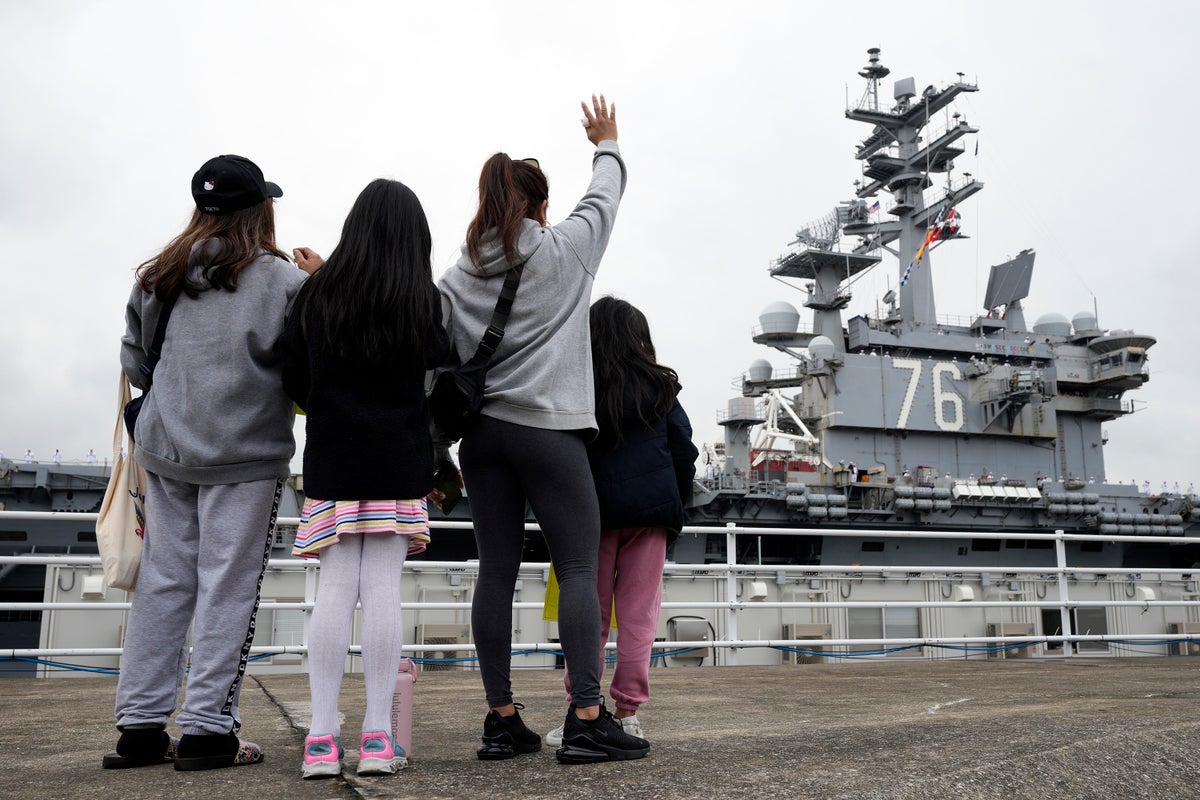
A U.S. Navy strike group's flagship aircraft carrier left its Japanese home port on Thursday, wrapping up nearly nine years of deployment in the Indo-Pacific, where it served a key role in the U.S. effort to bolster defense ties with Japan and other partners in the region.
The departure of USS Ronald Reagan — one of America’s largest warships and a nuclear-powered Nimitz-class aircraft carrier — comes at a time of growing tension in the face of increasingly assertive China in the Indo-Pacific.
It will be replaced later this year by USS George Washington, another Nimitz-class carrier. Japan has been accelerating the buildup of its military capability and significantly increased joint naval operations with the United States.
Family members and friends of the crew were on hand to wave the carrier off from Yokosuka Naval Base after its final patrolling mission earlier in the day.
Hundreds of sailors stood along the rails while others on the flight deck stood forming the Japanese saying “dewa mata,” or “see you." The carrier was accompanied by two guided-missile destroyers, USS Robert Smalls and USS Howard.
Speaking at the ceremony, U.S. Ambassador to Japan Rahm Emanuel ensured a “seamless transition.”
“The USS Ronald Reagan and her crew have ensured that millions of people across the Indo-Pacific have been able to live their lives free of coercion, aggression and suppression,” Emanuel later told reporters.
USS Ronald Reagan first arrived in Yokosuka in 2015. Earlier, during its deployment near the Korean Peninsula, the carrier contributed in Operation Tomodachi, following the 2011 earthquake, tsunami and nuclear disaster in northeastern Japan.
USS Ronald Reagan was the only American aircraft carrier deployed as a flagship of the Carrier Strike Group 5 under the U.S. Navy's 7th Fleet, to a home port outside the U.S.
During its tenure, it participated in dozens of multilateral exercises and visited more than a dozen foreign ports, including its historic port call to Da Nang, Vietnam, last year.







